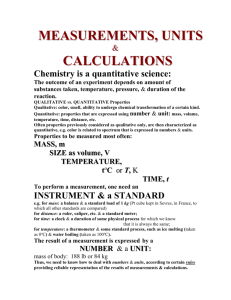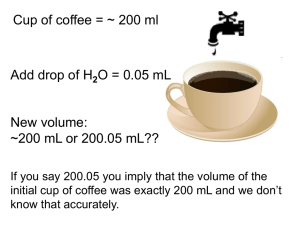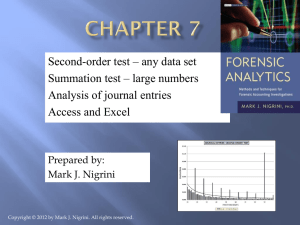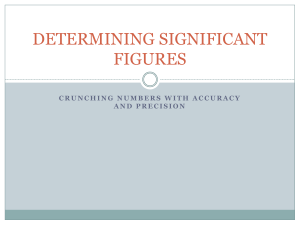Physics 162 Elementary Astronomy
advertisement
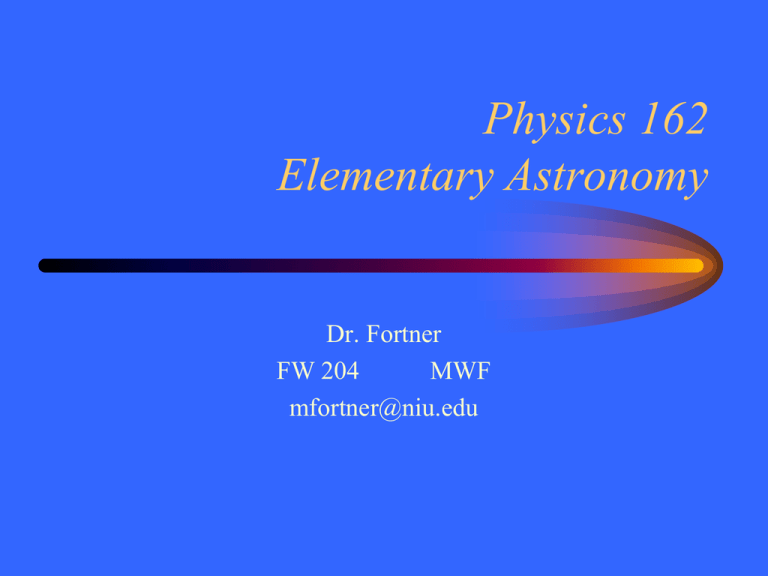
Physics 162 Elementary Astronomy Dr. Fortner FW 204 MWF mfortner@niu.edu Web Pages • My Page: www.niu.edu/~mfortner/ • PHYS 162 syllabus and lectures: nicadd.niu.edu/~fortner/course/phys162/ • Webassign: www.webassign.net • Observatory: www.niu.edu/physics/observatory/ Course Topics • The course is divided into four broad topics. – Foundations - Tools and rules – Planets - Earth and its neighbors – Stars - How the sun and other stars work – Universe - Galaxies and beyond • Each topic includes a written assignment and a test. • Each week includes an online homework assignment. Why Astronomy? • Astronomy is as old as humans have looked up at the sky. • Astronomy is the science of stars and other objects in space. – Physics, chemistry, geology, even some biology – Laboratory for conditions beyond earth-based experiments • Astronomy remains newsworthy today. – News stories from NASA and other countries – Movies and popular culture Measurement and Units • Scientific measurement requires standard units. – English units – foot, pound, second – Metric units – meter (m), kilogram (kg), second (s) – Derived units – cubic meter (m3), watt (W) – Alternate units – hour (h), light year (ly) • The metric system has two major strengths. – Widespread use in science – Prefixes based on powers of ten Scientific Notation • In science some measurements can be very large or very small compared to the base unit. • Scientific notation uses powers of 10 to represent decimal places. – Positive for large values: 456000 = 4.56 x 105 – Negative for small values: 0.00753 = 7.53 x 10-3 (only one non-zero value to the left of the decimal place) SI Prefixes • Prefixes on units are used to represent powers of ten. • Prefixes denote powers of ten from -18 to +18 mostly in steps of three. • For example a kilometer (km) is 103 meters or 1000 meters. • • • • • • • Most Common nano (n) 10-9 micro () 10-6 milli (m) 10-3 centi (c) 10-2 kilo (k) 103 mega (M) 106 giga(G) 109 • Common, but the power is not a factor of three. Unit Conversion • Conversion between units must be of the same type – Length conversion: 1 in = 2.54 cm – Time conversion: 1 h = 3.6 x 103 s • No conversion between different types of units. – 1 m3 not equivalent to any number of m Significant Figures • Any value is expressed in some number of digits. • The number of digits (without left side zeroes) is the number of significant figures. • With no decimal point, skip right side zeroes. – – – – – 38 5.06 0.0041 7,000. 2,000 2 digits, 2 significant figures 3 digits, 3 significant figures 5 digits, 2 significant figures 4 digits, 4 significant figures 4 digits, 1 significant figure One Ton Assume the density of a rock is three times that of water. How many centimeters across is a one metric ton (1000 kg) rock? • The rock has a density of 3 x 103 kg/m3. • The volume is – 103 kg/(3 x 103 kg/m3)=0.3 m3 • Estimate that the rock is a sphere, V = (4/3) r3 – d = 2r = 2 (3V/4 )1/3 – d = 0.9 m x 100 cm/m = 90 cm


